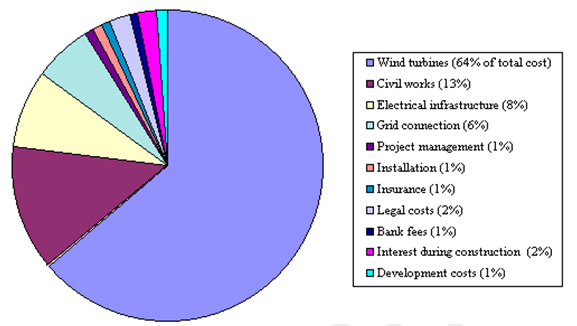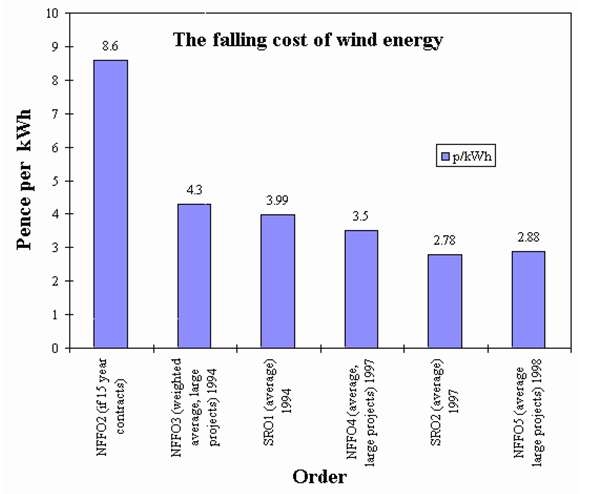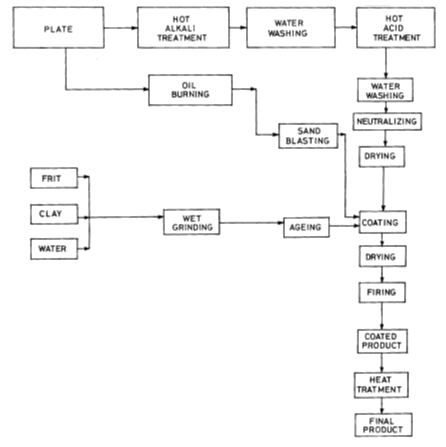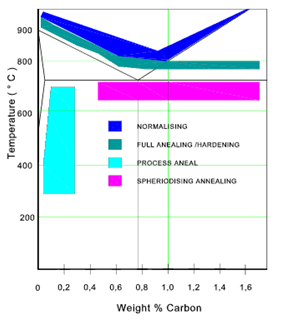The US and the UK Master’s Part / Chapter-wise Dissertation Writing Service

Then You’ve Certainly Reached the Right place
Cost of wind turbine systems
Part I
The generation of electricity can be done through adopting various technologies. The basic requirement in the generation of electricity is the utilization of a fuel to propel the turbine in order to run a generator, which is fed into the grid. Different types of turbines are used, which are designed as per the nature of fuel that will be used to propel the turbine. Wind is a non- conventional source of energy and environment friendly, and is used as a fuel to propel the turbine which in turn generates electricity.
During the past two decades, the cost of generating electricity through the use of wind turbines has been reduced considerably to the tune of 80% or more. During the early 1980s, the electricity produced from wind cost around 30 cents per kilowatt-hour, with the introduction and usage of utility-scale turbines. At present, the technologically modernized wind power plants is considered to be very cost effective and can reduce the electricity generation to as low as 5 cents per kilo watt-hour when compared to the use of other conventional fuels such as the coal and gas.
The National Renewable Energy Laboratory (NREL) which is a pioneering institution engaged in the research of wind energy is extending their technical know-how to the wind power sector in order to design wind turbines of the future , with the aim of achieving maximum cost efficiency in electricity generation through the use of wind power.
Part II
There are various factors which determine the expenditure involved in the commissioning of the wind turbines. The cost of electricity will be lesser when the wind turbine is able to generate more electricity. The following factors contribute to this phenomenon.
1.The area of the wind farm
The site where the wind turbine is installed should have a considerable free area with great wind speed. This would enable the turbine to get propelled smoothly at a high speed to generate power and would reduce the cost of electricity generated .
2.The speed of wind in the catchment area
The speed of wind in the site where the turbine is installed is a determining factor in the generation of electricity. When the wind speed is greater, the efficiency of the wind turbine will be more, thereby would be able to generate power economically. The scientific calculation of power generation is that electricity generation is a function of the cube of the speed of wind. For example, if the wind speed is twice, the content of energy will be eight times.
3.The expenditure involved in installing the wind turbines
The cost involved in the erection of the wind turbine is also a vital factor in deciding the cost of power generation. When the construction cost is competitive, it would have its effect in the cost of electricity generated. Now, the wind turbines are made available in various specifications to suit the size of the wind farm and the nature of use.

Researchers to mentor-We write your Assignments & Dissertation
With our team of researchers & Statisticians - Tutors India guarantees your grade & acceptance!
About servicePart III
Wind turbines are made available in different shapes and capacities to suit the purpose at which it is put to use. The cost involved in generating electricity from wind consists of the following:
- Fixed cost: Under this, the costs involved in the purchase of the wind turbine, cost of erection, and the power plant and feeding it to the grid. It is estimated that the fixed cost is on the higher side to the tune of 75% to 90% in the case of on-shore wind energy power generation.
- Running cost: This includes the operation of the wind turbine and maintenance.
- Financial cost: This has relevance to the repaying of loan towards purchase of turbine, construction cost etc.
The cost to be incurred for commercial wind turbines is higher than that for small wind turbines. In the case of commercial wind turbine, the power generated is fed into the grid of big public distribution network, where as in the case of small wind turbines, the maintenance of operation of the system is solely the responsibility of the owner of the turbine.
The cost involved in commercial wind turbine ranges from $1 to 2$ million per MW installed capacity and that with a size of 2MW costs around $2.8 million installed capacity. These turbines are economically viable. The smaller farm turbines or that for residential use, costs lesser, but are more expensive while calculating the cost of power generated per kilowatt. Hence a 10 kilowatt turbine would cost around $48000. Likewise a 10 kilowatt wind turbine will cost around $ 2800 to $ 4800 per kilowatt of capacity.
In conclusion, the wind energy is an environment friendly non- conventional energy source and has to be tapped because the other conventional sources of energies such as the coal, oil and gas are fast depleting. Even if the initial cost to be incurred on installing a wind turbine may seem higher, in the long run, it may prove to be economical and a viable solution to solve the energy crisis.


The falling cost of wind energy is shown above [1]
Ceramic Coatings
Description: This paper presents a detailed look into the properties of glass ceramic coatings and underlines aspects that render it as a preferred material of choice as compared to other materials. The paper also details the manufacturing process and its pros and cons.
Keywords: glass ceramic coatings, temperature tolerance, manufacturing, scratch resistant
Introduction:
The ceramic coatings were proposed as efficient alternatives to other coating materials for their resistance against the wear and tear induced by nature. Other coating materials are easily corrosive, can adhere easily and can erode. There are various coating systems used in the engineering industry and in recent times, the glass-ceramic coatings are the most preferred ones as they have the advantageous properties of chemical inactivity, tolerance to extreme temperatures, and highly effective mechanical properties. The most attractive mechanical properties that have replaced other coating materials are its resistance to scratches.
Ceramic glass coatings are at par with the requirements of modern technologies employed in engineering that have a wide variety of efficiency. Considerable improvements have been made in the recent years so that the methodology of manufacturing the same has been highly standardized.
Properties of the glass ceramic coatings:
Glass ceramic coatings have high resistance to extreme temperatures, scratch and corrosion. They are also not brittle like pure glass. They have the following properties.
- Abrasion resistance -1×0–1×2 mg/cm2
- Alkali resistance 3–6 mg/dm2
- Thermal shock resistance 400°C to 600°C
- Impact strength 22–25 kg/cm
Method of manufacturing glass ceramic coating:
Substrate selection and preparation:
Iron is the major metal used. It should be devoid of or should have low carbon and hydrogen content. Also the regular structure and texture of the surface should be maintained
Substrate preparation: Substrate refers to the particular metal that should kept ready for the coat to be applied and it should be cleaned beforehand. This can be done mechanically or using heat or chemicals
Degreasing by thermal means:
Impurities in the mix could be removed by means of heating it. Through this process organic impurities are removed.Mechanical and chemical cleaning:
This involves the use of quartz, iron or alumina to remove the dirt and other impurities. Next step is the treatment with chemical solutions like alkalies to remove the dirt and then the material is washed with overflowing water to remove the traces of cleaning fluids.
The process of Pickling and flushing with nickel:
Pickling is nothing but treating the material with acids like sulphuric acid. But one should be careful about the strength of the acids. Then it is treated with NiSO4×6H2O so that a thin layer of nickel is deposited on the material. This also prevents the formation of cooper head.

Neutralizing
This involves the further removal of acidic residues so that they are eliminated completely. This is achieved by treatment with Na2CO3 and Na2B4O7×10/5×H2O in the presence of two fold excess water. The temperature should be around 70°C.
Coating material preparation
The next step is the melting and fritting of the product obtained. It is grinded in a mill in the presence of electrolytes. The resulting product is a thick suspension.
Adding milling components
The slipping nature of the material could be avoided by the addition of electrolytes like MgSO4 and K2CO3. Sometimes materials having refractory property like quartz are also used. At last the ability to flow, the ability to spread and set are measured and set properly before applying it.
Application and drying
The method of application involves dipping and slushing. A temperature of 100°C is used for drying. To accelerate drying clay can be used
Maturing of the material
Appropriate metal substrate should be used because an error in this step causes poor adhesion or formation of holes etc. This process is done by heating the material for a specific period of time and them cooling it for a specified time. gases like carbon monoxide and carbon should be especially avoided.
Manufacturing ceramic coating material
Formation of ferroelectric film
The initial step involves the formation of a ferroelectric film. Sol-gel material or an MOD material can be used in the formation of the film. Otherwise a hydrolysate or a polycondensate can be used. In latest technologies, the ferroelectric film containing a perovskite structure has been intended to be used. Or else, semiconductor devices can be used to manufacture the ferroelectric film.
Preparing sol-gel matrix
The first step is the formation of a bond of Me-O-Me-O of high strength. Two steps are involved. They are hydrolysis by treating with water and polycondenstion. The polycondensation step involves the formation of a Me-O-Me bond. Here Me can be any metal like lead, titanium etc.
To develop high quality coatings, the method used is stirring the raw material by combing it with oxides. In this reaction, platinum metal is used as the catalyst. The oxide used is generally derived from elements like silica and germanium.
The reactor used is in such a way that the materials are in contact with the catalyst in a uniform manner. This is achieved by constant and automated stirring of the components. As this is one aspect that should be paid more attention in the manufacturing of ceramic coatings, the catalyst is shaped in the form of a mess so that a direct contact is assured.
The film thus obtained is of outstanding quality and has a persistent stability. The coat thus obtained is applied to any material on its base. The coating layer is heated to form a ceramic film after drying it.
The coating methods used are as follows: spin coating and dipping.
Advantages and disadvantages of ceramic coating
- It is used in the electrical industry to provide insulation for wires. It is also helpful in achieving the required degree of conductivity.
- In order to protect materials from acids the coating materials should be able to withstand alkalis, acids and a variety of other solvents hence the ceramic coating is highly suitable for such kind of applications.
- Coating with ceramics offer protection from oxidation, and keeps the materials bright. This also prevents them from interacting with carbonaceous gases.
- They also offer the advantage of tolerance to abrasion. As it contains finely distributed crystals it ends up in significant improvement of the physical properties of the material
Disadvantages
- Cost and the requirement of high precision in the methods used is the disadvantage of using ceramic coating
Hardened Steels
Description: This paper talks about the properties of hardened steels, outlines the manufacturing process, and also indicates the advantages and disadvantages offered by hardened steel.
Keywords: hardened steel, martensite, soft steel, pearlite, spheroidising, carburization
Introduction
The hardened steel is nothing but medium or high carbon steel that is extensively treated with heat. This is followed by two processes:
- Tempering
- Quenching
Further steps are carried out to obtain hardened steel. Steels are comprised with a broad range of mechanical properties. These properties are conferred to them by treatment at various temperatures. For instance, in applications like fabrication, the ductility and also the formability of the steel can be achieved from the same material. By using the property of annealing, a cooling at a specific temperature many manipulations can be introduced in the material.
Properties
Steels contain 10% chromium.
Hardened steel has 12% chromium and no nickel. This is of magnetic grade and can be further hardened by treatment.
Manufacturing of hardened steel
Normalizing of the material
This involves alternate heating at 40oC which is then followed by cooling the material in the atmosphere. It should be taken care that the temperature should not be above 50oC. The resulting product is called as pearlite. This results in the formation of a full homogenous mixture and properly separated structure.

Full Annealing of the material
Slow cooling of the steel after reheating is done so as to remove the stress in the material that is present internally. The crystalline structure can be further improved. After this process, the growth of the grain materials is encouraged.
Hardening
By again heating the product to its normalizing temperature and then cooling it subsequently, in an appropriate oil or medium, the steel is hardened. This process is referred to as quenching.
Both soft steel (pearlite) and hard steel (martensite) can be obtained. By raising the temperature to 760oC, a face centered cubic of iron is obtained as the product and by gradual cooling this iron is pushed back into the cube resulting in pearlite. By rapid cooling in oil or water the iron atoms stay inside and this results in hardened steel called as martensite.
There are also other refining processes associated
Relieving of stress in the material
Heating at high temperatures like 550oC to 650oC and cooling in a controlled atmosphere removes the stress associated with the material by rearranging and converting the energy configuration to a lower one. Hence degradation of the steel process is avoided while being used in machineries.
The method of Spheroidising
The method is used in the case of hypereutectoid steels. This is done by heating the metal to between 600oC and 650oC. After heating, it is held at specific temperatures to form and embed itself in spheroidal cementite (Fe3C) are embedded. The product obtained has high ductility and toughness
Tempering method
This process results in precipitation and spheroidisation of the carbides in the steel. The specific requirement for this process is the control of temperature and the time. Thus high quality toughened steel is obtained.
Other treatments include that influence the manufacture of hardened steel are:
- Hardening using flame
- Carburization
By this method the material is improved further and tolerates wear and tear better. By allowing the material to diffuse into local surfaces and eventually heated and ends up in the formation of the required combination of material. There are three primary carburising processes
- Liquid carburizing
- Gas carburizing
- Pack carburizing
- Treatment with nitrides
This process comprises of treating at a temperature of 490oC to 530oC and nascent nitrogen and subsequent decomposition of the material with gaseous ammonia. Thus a highly hard and brittle metal is got. This process is only selectively applied for some alloys.
The significance of treating with nitrides is that even if the treated materials are recycled, they do not lose their properties and hence can be treated at even 500oC.
- Treatment in vacuum
Vacum treatment offers many advantages as they can be used at very low pressures. The advantages of using vacuum furnaces are as follows:
- Oxidation at the surface level is greatly minimized
- Also there occurs only less distortion in the structure
- Many time consuming processes like post cleaning are lessened
- The materials can be shaped using a machine
- One can exercise much more control over the processes involved
- The material used for quenching can be selected as per our requirements. The use of a technology called as EDM can save half the time in producing the hardened steel and also provides competitive advantages.
- Quenching medium
Water, oil, air or other liquids are normally used in the process of quenching. The preferences for quenching are distilled devoid of impurities. This provides insulation from heat.
Hard water should not be used for quenching as it would release unwanted materials when the temperature is raised. To obtain hardness soap or brine is occasionally used.
Advantages of hardened steel
- Hardened steel offers increased toughness to the metal and allows for flexible elongation of the metal.
- The hardened steel is especially used in case of applications like rail roads to withstand high fatigue rates and wear and tear. It also helps to operate increased axe loads. This is particularly advantageous in the case of bends in the path where the rail roads need to be often replaced at such highly susceptible paths. Thus accidents due to ignorance can be avoided. Also fractures in the roads can be avoided.
- Hardened steels are further used to shape and mended into a required shape using processes like “forging, extrusion, rolling” or other processes.
Disadvantages
- Reduction in the martensite (BCT) structure may result in the development of spheroid carbide and ferrite matrix.
References
Majumdar, A. & Jana, S. (2001). Glass and glass–ceramic coatings, versatile materials for industrial and engineering applications bull. Material Science, 24 (1), 69–77
Viewed online on February 16, 2010 from http://www.roymech.co.uk/Useful_Tables/Matter/Titanium.html
Materials. Titanium Alloy (April 2, 2002) Materials Information Service – The Selection and Use of Titanium, A Design Guide. Viewed online on February 16, 2010 from http://www.azom.com/details.asp?ArticleID=1341
Viewed online on February 16, 2010 from http://ieeexplore.ieee.org/xpl/freeabs_all.jsp?tp=&arnumber=4752005&isnumber=4751946
Viewed online on February 16, 2010 from http://www.freepatentsonline.com/4900510.html
Viewed online on February 16, 2010 from http://www.osaka-ti.co.jp/e/e_product/titan/
Viewed online on February 16, 2010 from http://books.google.co.in/books?hl=en&lr=&id=okSA1N1xAxgC&oi=fnd&pg=PR5&dq=manufacturing+process+of+titanium+alloys&ots=WfL7BRAn3N&sig=muJ6vnV_nXK-0Rx7ETot4N1mIHs#v=onepage&q=manufacturing%20process%20of%20titanium%20alloys&f=false
Viewed online on February 16, 2010 from http://wiki.answers.com/Q/What_are_advantages_and_disadvantages_of_Titanium
Viewed online on February 16, 2010 from http://www.springerlink.com/content/t5q8265626726864/
Viewed online on February 16, 2010 from http://www.osti.gov/energycitations/product.biblio.jsp?osti_id=7101920
Viewed online on February 16, 2010 from http://www.library.iitb.ac.in/~mnj/gsdl/cgi-bin/library?e=d-00000-00---0PHD--00-1--0-10-0---0---0prompt-10---8-------0-0l--11-zh-50---20-help---10-3-1-00-0011-1-0gbk-10&cl=CL2&d=HASH01ae3cf6045d3a5383b0c6b0&x=1
Viewed online on February 16, 2010 from http://www.freshpatents.com/Titanium-alloys-and-method-for-manufacturing-titanium-alloy-materials-dt20070614ptan20070131314.php
Viewed online on February 16, 2010 from http://www.google.co.in/#hl=en&source=hp&q=hardened+steels&meta=&aq=f&oq=hardened+steels&fp=a3ff10bb3afc66599

Full Fledged Academic Writing & Editing services
Original and high-standard Content
Plagiarism free document
Fully referenced with high quality peer reviewed journals & textbooks
On-time delivery
Unlimited Revisions
On call /in-person brainstorming session
More From TutorsIndia
Coursework Index Dissertation Index Dissertation Proposal Research Methodologies Literature Review Manuscript DevelopmentREQUEST REMOVAL



